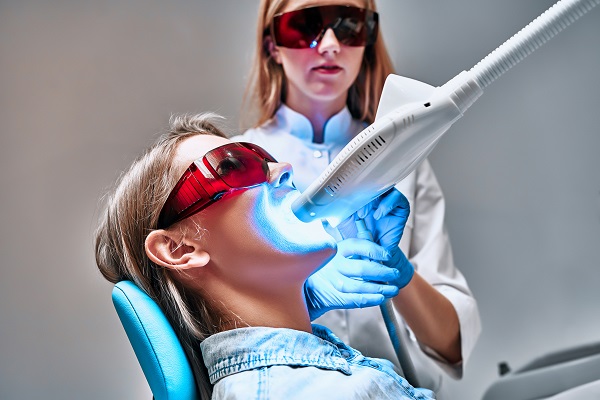How a Root Canal Is Performed Using Laser Dentistry

Want to learn more about laser dentistry? This advanced dental technology is one that utilizes special dental lasers to address a number of dental procedures. One of the more common procedures dental lasers can be used for is for root canal therapy reasons, as well as crown lengthening and treating gum disease.
Why root canals are necessary
A root canal is necessary when a dental patient experiences some type of infection within their tooth. This infection needs to be removed as soon as possible in order to save the tooth. Traditional root canal treatment includes using anesthesia and dental drills, while modern root canal treatment can include using dental lasers.
According to the Academy of Laser Dentistry, today there are dozens of indications for use with various dental laser devices; and the clinical applications continue to increase, making the laser one of dentistry’s most exciting advances with unique patient benefits.
How laser dentistry is used to perform root canals
Soft tissue lasers offer dental patients a few advantages. Using dental lasers means that patients can experience less bleeding during and after their root canal, less swelling that, in turn, often means less pain and the ability to heal in a faster timeframe.
Lasers first remove infected tissue
Dental lasers use a special beam of light in order to remove any infected tissue within a patient's tooth. Lasers are very useful during root canal procedures because they are very precise and therefore allow dental professionals the ability to very accurately treat the infected tooth. The fact that lasers eliminate any bacteria within the tooth means that the tooth is also being sterilized.
Filling the tooth
After laser treatment, the tooth is filled using one of the many different types of dental filling material options available. Dental patients need to choose the type of material they want before their root canal appointment. Some of the more common filling choices include porcelain, gold and amalgam. Dental fillings can last anywhere from 10 to 30 years, depending on the type of material chosen.
Using lasers means less discomfort
Patients who undergo dental laser treatment in order to address their root canal problems will often experience less discomfort or pain that is often associated with undergoing a root canal procedure. Some dental patients may even experience no pain at all. While it does depend on each individual patient when it comes to how much discomfort or pain they may experience, if any, it simply depends on each patient's particular situation.
Root canals save teeth
Is laser dentistry the right choice for you? Root canals are necessary dental procedures that save teeth, which is important because our teeth are designed to last a lifetime. Once a tooth is lost, it needs to be replaced in order to retain one’s good oral health. Since root canal therapy is a necessary procedure under certain situations, those who are in need of this dental procedure can now choose a dental professional who offers laser dentistry treatments.
Are you considering laser dentistry in the Castle Rock area? Get more information at https://www.foundersdental.com.
Recent Posts
An emergency dentist is essential for treating dental injuries, including a knocked-out tooth. Whether resulting from a sports injury, accident, or fall, a lost tooth requires immediate attention to improve the chances of successful re-implantation. Timely care from a skilled emergency dental professional further increases the likelihood of preserving the tooth and reducing the risk…
Oral health myths can often lead to misguided attempts to solve dental problems, potentially making things worse. Emergency and general dentists frequently treat patients who have attempted (and failed) to manage dental emergencies with these quick fixes. Debunking common myths about oral health can save patients time, money, and trouble. Along with that, debunking these…
When a toothache persists or becomes severe, an emergency dentist can provide immediate relief. Whether it is due to an infection, a cavity, or an injury, prompt dental care also helps to prevent further complications. Understanding what to expect when seeing a dentist about a toothache can help ease concerns.Tooth pain can result from minor…
Modern dental fillings bend strength with a lifelike appearance, helping restore teeth while preserving natural structure. Advances in adhesion, ceramics, and resin chemistry allow dental fillings to match shade, shape, and function with remarkable precision. With the right material and technique, dental fillings resist wear, seal out bacteria, and support comfortable chewing for years.Every tooth,…


